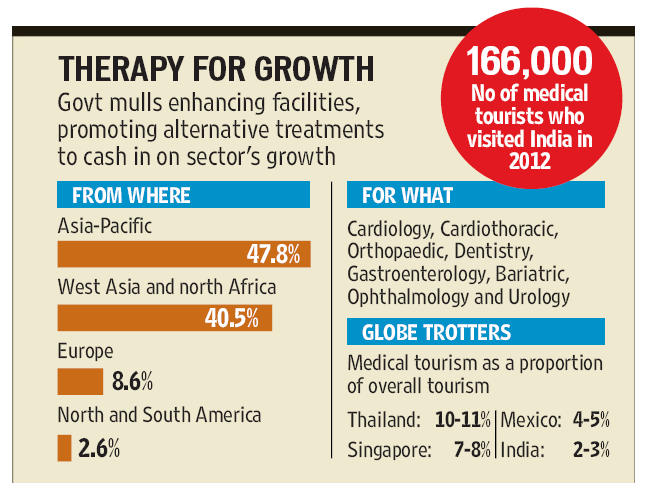Dubai :
Healthcare Mena (Middle East and North Africa) Ltd. chief executive officer Ravi Dhir said the new policy on the issuance of medical tourism visas to overseas patients is definitely a boon to the country’s quest in becoming one of the best medical hubs across the globe. Healthcare Mena owns and manages the aesthetic and medical centre.
It was early last week when Abu Dhabi announced that medical tourism visas would be provided to overseas patients, whose sponsors would be the hospitals or medical centres across the seven emirates, they would be confined in for check-up or treatment or both.
Dhir said the decision “is a very good development” in the field of medical tourism as well as a “very good decision made by the UAE.” He pointed out two reasons for that. First, making the hospitals and medical centres the sponsors of the overseas patients shortens the application for the visas since these establishments would get the direct hand in going over all of the patients’ medical files, “instead of having these go through visa-issuing offices first.”
Second, with the hospitals and medical centres as the sponsors which directly scrutinise the applications for medical tourism visas, medical malpractice is thwarted and the patients are guaranteed the necessary proper and correct medical procedures or treatment.
This is so because no management would risk its name and reputation for patients if this does not have the facilities or human resources for the consultations and treatments.
Dhir said the UAE is way ahead in becoming a medical hub because it offers the best scope for the business, with excellent government support compared to other countries in the region.
With the country being a tax-free haven, medical consultations and procedures are inexpensive compared to US and Europe.
“A $10,000 treatment in the US may only cost $7,000 in the UAE,” Dhir said. SPF+50 sunscreenThe ultraviolet (UV) rays of the sun are much harsher during the hot summer months and so it is best to be protected with an SPF+50 Sunscreen.
The recommendation was from Dubai-based Dr Rehab Sattouf who mentioned on Thursday dermatological concerns of her patients, majority of which are from the Middle East, and women between the ages of 20 and 40, in the past six years.
SPF refers to the “sun protection factor which is how a sunscreen protects the skin from the damaging UV rays,” according to the SPF Skin Care website.
Sattouf is among the dermatologists-cosmetologists at the newly-opened Beverly Hills Aesthetic and Medical Centre in Jumeirah.
“A sun protection cream with a high SPF, such as SPF +50, is the best because it assures more protection for the skin. The UV rays of the sun during the summer are stronger and more damaging to the skin as well,” said Sattouf.
She had earlier classified skin colour into six types: these are Numbers 1 and 2 as the fair-complexion; Number 3, light brown; Number 4, olive-skinned; Number 5, dark brown; and Number 6, black.
Everyone must apply and protect their skin with sunscreen 30 minutes before getting exposed under the sun, regardless of their skin type and gender, stressed Sattouf.
Continuous sun exposure means lavishing the skin with sunscreen every two hours thereafter to avoid early skin aging as well as other skin problems and diseases such as cancer.
On dermatological concerns
According to Sattouf, excessive heat and the severe UV rays have Middle Easterners getting worried about melasma, the dark or black spots on the skin.
This is common to those with skin type Numbers 3 to 5 because “melanin absorbs the UV rays more and too much of this in the skin leads to pigmentation.”
Dry skin due to the absence of humidity, brought about by too much exposure to the air conditioning systems, in order to avoid the ill effects of the sun, is another big concern.
Oily skin and acne caused by the sweltering heat and perspiration are also a problem.
“Women who use too much make-up have these issues as well because of blocked pores,” said Sattouf.
Other concerns are hair loss arising from “the high concentrate of sodium in the tap water and not only because of the hot climate” as well as fungal and bacterial infection.
Sattouf said the fungal and bacterial infection “in the armpits, between legs, between toes and other folds in the body are caused by excessive sweating or perspiration, brought about by the continuous use of closed shoes and too many layers of clothes.”
Following are the other suggestions of Sattouf for skin care:
• Avoid swimming between 11 am and 4 pm when the UV rays of the sun are at the strongest.
• Use moisturisers during the day and night cream at bedtime.
• Use facial cleanser according to the skin type (dry/normal/oily).
• Avoid alcohol and tobacco which lead to early skin ageing with the untimely appearance of fine lines.
• Eat a lot of vegetables and fruits whose fibre, vitamins and antioxidants help maintain a youthful skin.
• Drink two to three litres of water a day as substantial amounts of water in the body provide humidity and stimulate the production of collagen that also keeps the skin youthful.
• Maintain a regular exercise programme because it boosts blood circulation that provides the body with enough oxygen and removes carbon dioxide and other toxins.



